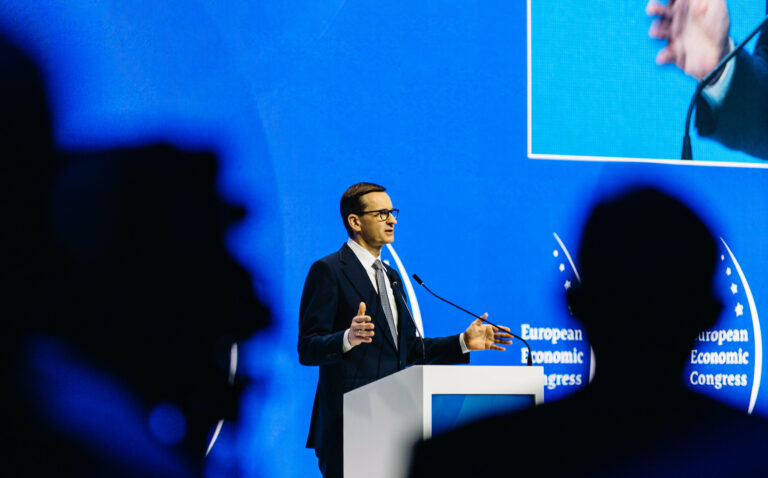
“BELGICA” vessel: Young European Ambassador visiting the research vessel
The European Union (the EU) and Ukraine have strong relationships, and Ukraine is considered a priority partner for the EU. In particular, the EU supports Ukraine in ensuring a stable, prosperous, and democratic future for its citizens and is unwavering in its support for Ukraine’s independence, territorial integrity, and sovereignty. This support is manifested in the short and long-term assistance to political and economic reforms. Furthermore, among others, the EU pays a lot of attention to enhancing the environmental stability of Ukraine to ensure a better quality of life and a more robust sustainable economy.
At the end of 2021, with the assistance of the EU and the Kingdom of Belgium, Ukraine received the research vessel “BELGICA”. The vessel has been a flagship of Belgium’s environmental monitoring process in the North-East Atlantic for an extended period until a new research vessel, also named “BELGICA,” was built. Considering that Ukraine did not have any operational vessel suitable for sea monitoring, it was decided to provide this fully functional ship to the Ukrainian Scientific Centre of the Ecology of the Sea (UkrSES) to reinforce monitoring of the marine environment in the Black Sea region. The Belgian government signed the respective agreement on September 13, 2021, following a Memorandum of Understanding signed between the Belgian Federal Science Policy Office, the Royal Belgian Institute of Natural Sciences, and the Ministry of Environmental Protection and Natural Resources of Ukraine in July 2021. On October 21, the vessel completed its voyage of 8,600 kilometers from Zeebrugge, Belgium, to Odesa, Ukraine, to start its new mission of monitoring the marine environment in the Black Sea. A few days later, in my capacity as a Young European Ambassador in Ukraine, I had the opportunity to visit the vessel and found out more about its mission and plans of operation in Ukraine.
The vessel’s transfer was made possible by a joint EU/UNDP project, “European Union for Improving Environmental Monitoring of the Black Sea (EU4EMBLAS).” On its latest voyage, the ship was operated by a Ukrainian crew, with Ukrainian and international scientists working on board. The researchers assessed the presence of floating debris, and took samples of seawater and sediments for a special screening for tens of thousands of contaminants, microplastics, and dissolved DNA from the environment in order to assess biodiversity and analyse the spread of antibiotic resistance genes in marine animals. At a ceremony held in Odesa on October 29 to welcome the vessel’s arrival, the ship was renamed after the famous Ukrainian marine biologist and director of the Institute of Marine Biology “Borys Aleksandrov.”
So how will Ukraine as a country benefit from receiving such a vessel? Ukrainian scientists will use the research vessel to collect data on pollution, biodiversity, and the spread of antibiotic resistance in marine animals of the Black Sea region. With such a vessel, Ukraine will have the opportunity to study the quality of the sea in more detail, which will help to improve the ecology of the Black Sea and the country in general.
According to one of the experts I spoke to, a huge problem across the entire Black Sea is floating debris, which in the Black Sea is twice as large as in the Mediterranean Sea. A lot of chemical pollution is concentrated in the Black Sea since major European rivers, such as the Danube and Dniester flow into the Black Sea. The EU EMBLAS project has carried out a study into the presence and concentration of chemical pollutants in the Black Sea (with regard to water, sea bottom and living organisms). Out of more than 2,100 known pollutants, 124 have been found in the water samples. Contaminants included petroleum products from maritime transport, water repellents used in the production of paper cups and packaging, mercury and dioxins. Pesticides used against weeds and insecticides such as fipronil, which is particularly toxic to bees, traces of pharmaceuticals for treating arrhythmia and hypertension, as well as chemicals contained in plastic bottles and sunscreen, which are harmful to marine inhabitants, and other chemicals were found as well.
The director of the Ukrainian Scientific Centre for Marine Ecology, Viktor Komorin, said they were drawing up a special plan to address some environmental descriptors stated in the EU Marine Strategy Framework Directive thanks to the arrival of the “BELGICA”. In addition, Viktor explained that one of the most important descriptors for the state of the sea is the presence of fish. Unfortunately, for the last 20 years, Ukraine has not had the opportunity to monitor the fish stocks and the impact of environmental pollution on them. He believes that now things will change.
During the visit, Yuri Oleinik, a member of the Ukrainian crew who took part in the journey of the “BELGICA” vessel from Belgium to Ukraine, demonstrated to us the research equipment on the ship thanks to which they will be able to collect material for research in a laboratory at the Ukrainian Scientific Centre for Marine Ecology, where they study water pollution and other environmental indicators. I must say that it is a mind-blowing experience to see such a thing! Moreover, the UkrSES scientist, Yurii Denga, shared the experience of their expeditions from Odessa to Batumi under the EU4EMBLAS project and stressed that it is the new equipment that will make it possible for them to explore the sea in practice and not in theory.
With such a research vessel, Ukraine is getting an opportunity to make the Black Sea coast and the sea cleaner, and this is a tangible result of EU-Ukraine cooperation, which can be felt by ordinary people in practice. Thanks to evidence based research, appropriate political decisions to increase the diversity of marine species and prevent the extinction of rare fish species can be taken.
It is very gratifying that more and more opportunities are coming to Ukraine thanks to the close cooperation between Ukraine and the EU. I believe that programmes like EU4EMBLAS are vital for showcasing to ordinary people the real impact of and results of such collaboration. Being a member of the team that had the chance to get acquainted with the vessel was an incredible experience.
LATEST

How you can help the planet every day

Building Europe: Poland’s experience of joining the European Union and lessons for Ukraine

World Health Day 2024: My Health, My Right

EUREKA MEETS EUROPE – opportunities to develop and study. My experience

Can you wear pink in the workplace?
More campaign pages:
Interested in the latest news and opportunities?
This website is managed by the EU-funded Regional Communication Programme for the Eastern Neighbourhood ('EU NEIGHBOURS east’), which complements and supports the communication of the Delegations of the European Union in the Eastern partner countries, and works under the guidance of the European Commission’s Directorate-General for Neighbourhood Policy and Enlargement Negotiations, and the European External Action Service. EU NEIGHBOURS east is implemented by a GOPA PACE-led consortium. It is part of the larger Neighbourhood Communication Programme (2020-2024) for the EU's Eastern and Southern Neighbourhood, which also includes 'EU NEIGHBOURS south’ project that runs the EU Neighbours portal.

The information on this site is subject to a Disclaimer and Protection of personal data. © European Union,